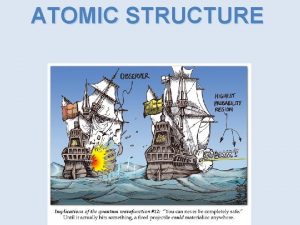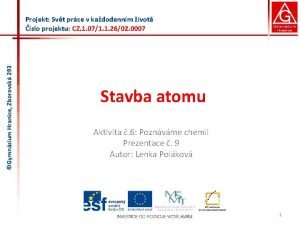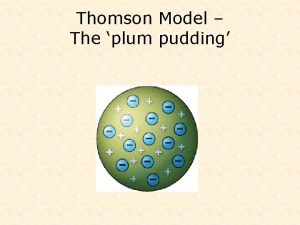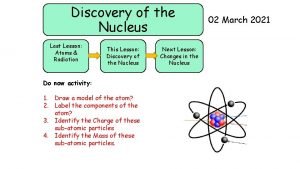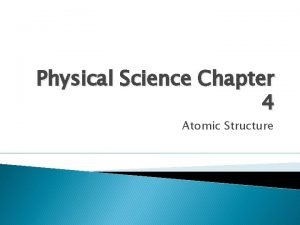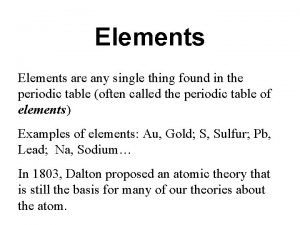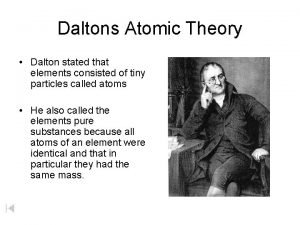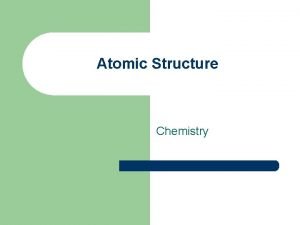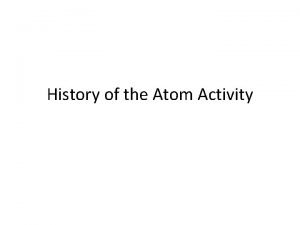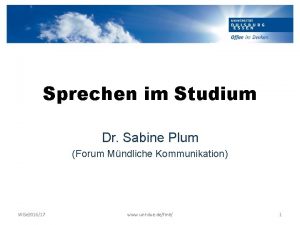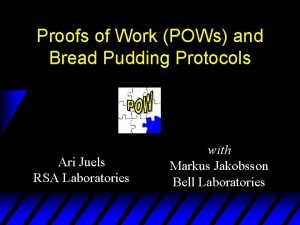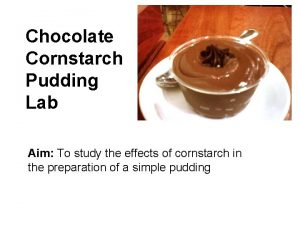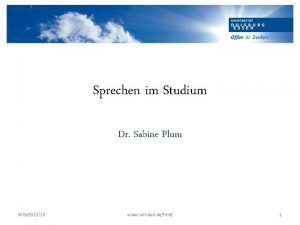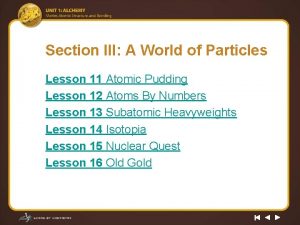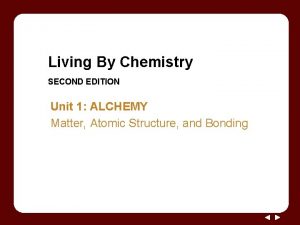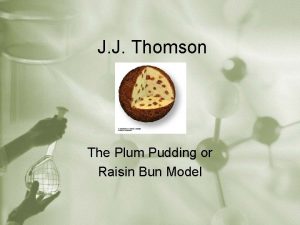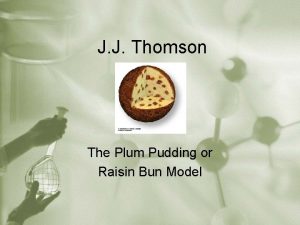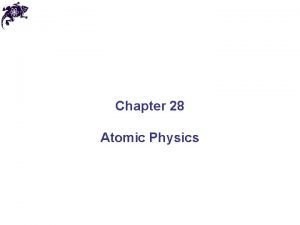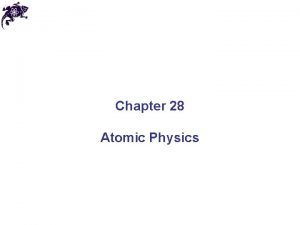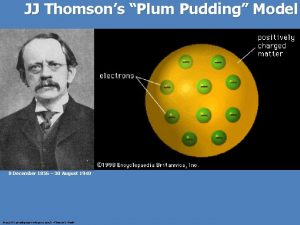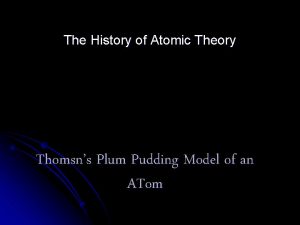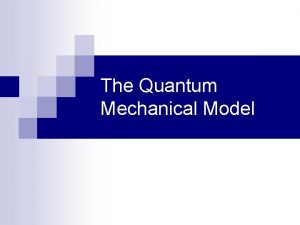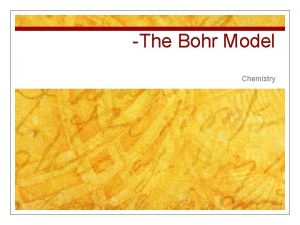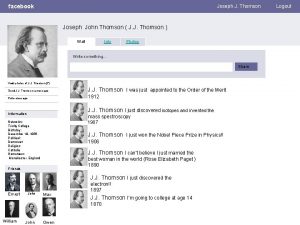Thomson Model The plum pudding J J Thomson























- Slides: 23

Thomson Model – The ‘plum pudding’

J. J. Thomson • 1897 – Joseph Thomson used the cathode-ray tube and discovered the electron.

Rutherford model

Ernest Rutherford (1871 -1937) • Learned physics in J. J. Thomson’ lab. • Noticed that ‘alpha’ particles were sometime deflected by something in the air. • Gold-foil experiment

Rutherford’s Apparatus beam of alpha particles radioactive substance circular Zn. S - coated fluorescent screen gold foil

Rutherford ‘Scattering’ • In 1909 Rutherford undertook a series of experiments • He fired a (alpha) particles at a very thin sample of gold foil • According to the Thomson model the a particles would only be slightly deflected • Rutherford discovered that they were deflected through large angles and could even be reflected straight back to the source

Lead block Uranium Florescent Screen Gold Foil

What He Expected • The alpha particles to pass through without changing direction (very much) • Because …. . • The positive charges were spread out evenly. Alone they were not enough to stop the alpha particles

Results of foil experiment if plumpudding had been correct. Electrons scattered throughout - + - positive charges + + - - + + + - -

What he expected…

Because he thought the mass was evenly distributed in the atom. - - -

Because, he thought the mass was evenly distributed in the atom - - - - -

What he got

What he got…

Interpreting the Observed Deflections. . beam of alpha particles . . . . gold foil . . . undeflected particles . . deflected particle

Density and the Atom • Since most of the particles went through, the atom was mostly empty. • Because the alpha rays were deflected so much, the positive pieces it was striking were heavy. • Small volume and big mass = big density • This small dense positive area is the nucleus

Rutherford Scattering (cont. ) Rutherford interpreted this result by suggesting that the a particles interacted with very small and heavy particles Particle bounces off of atom? Case A Case B Particle goes through atom? Particle attracts to atom? Case C Case D . Particle path is altered as it passes through atom?

Explanation of Alpha-Scattering Results Alpha particles Nucleus + + - - + + - + - - Plum-pudding atom Nuclear atom Thomson’s model Rutherford’s model

Interpreting the Observed Deflections deflected particle . . beam of alpha particles . . . . gold foil . . . undeflected particles

Rutherford’s Gold-Leaf Experiment Conclusions: Atom is mostly empty space Nucleus has (+) charge Electrons float around nucleus

The Rutherford Atom n+

Summary of the Rutherford experiment

Bohr Atom The Planetary Model of the Atom
 Jj thomson plum pudding model
Jj thomson plum pudding model J.j thomson plum pudding model
J.j thomson plum pudding model Plum pudding jj thomson
Plum pudding jj thomson Plum pudding vs nuclear model
Plum pudding vs nuclear model Average atomic mass def
Average atomic mass def William thomson kelvin quotes
William thomson kelvin quotes Plum pudding model
Plum pudding model Plum pudding model
Plum pudding model Plum pudding model
Plum pudding model Plum pudding model
Plum pudding model Plum pudding model
Plum pudding model Jj thomson
Jj thomson Kelemahan teori thomson
Kelemahan teori thomson Sabine plum uni due
Sabine plum uni due Proofs of work and bread pudding protocols
Proofs of work and bread pudding protocols Plum grove junior high
Plum grove junior high Pudding lab
Pudding lab Classification of starch
Classification of starch Sabine plum uni due
Sabine plum uni due Lesson 11 atomic pudding models of the atom
Lesson 11 atomic pudding models of the atom Poem structures
Poem structures Plum bun summary
Plum bun summary Lesson 11 atomic pudding models of the atom answer key
Lesson 11 atomic pudding models of the atom answer key Love is a ripe plum poem
Love is a ripe plum poem
